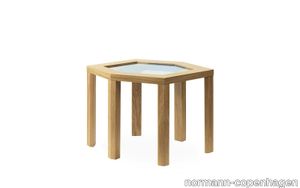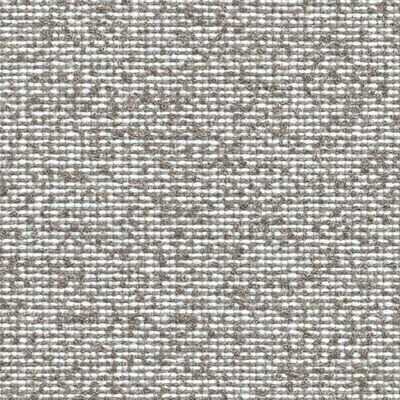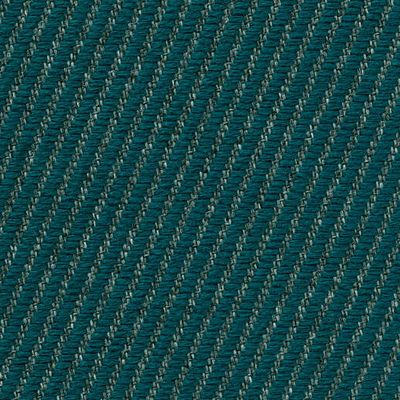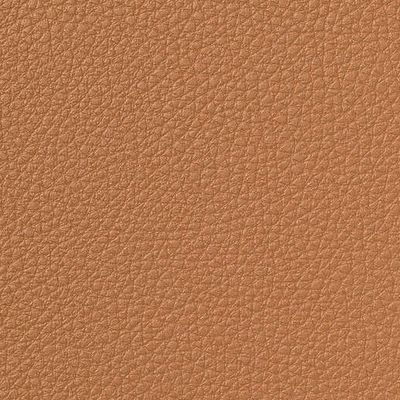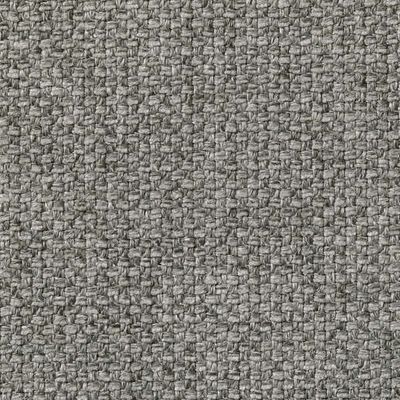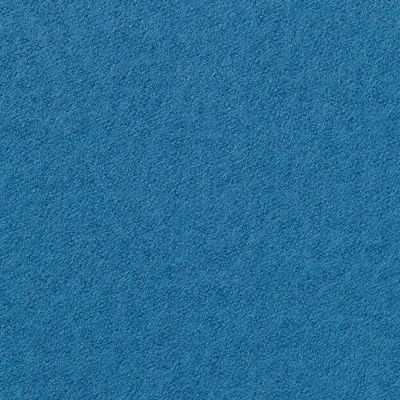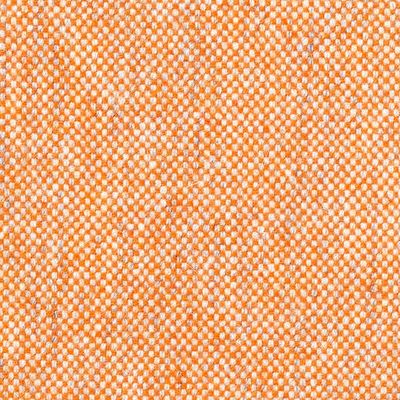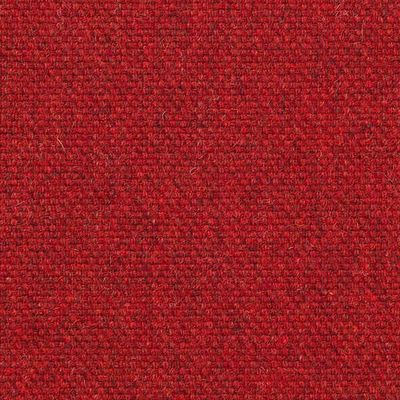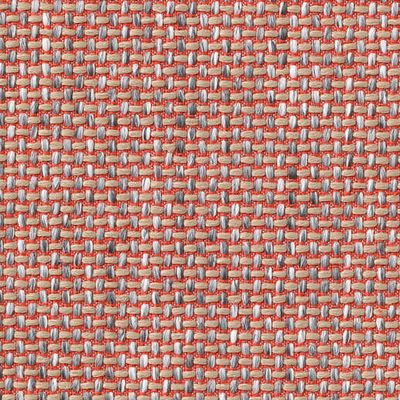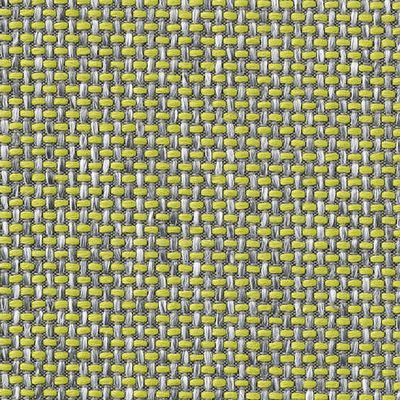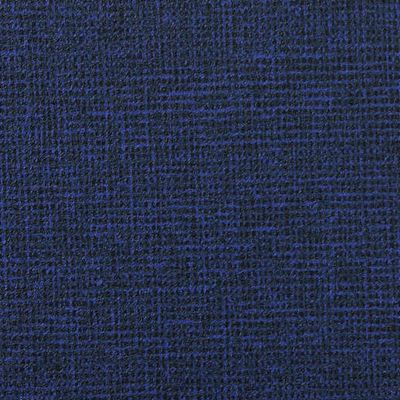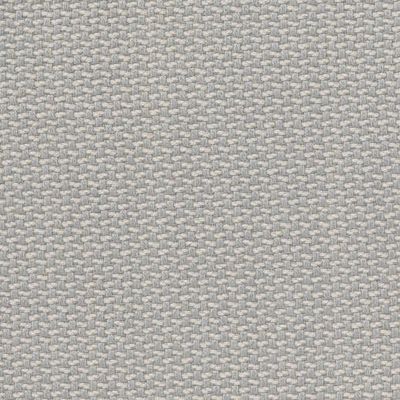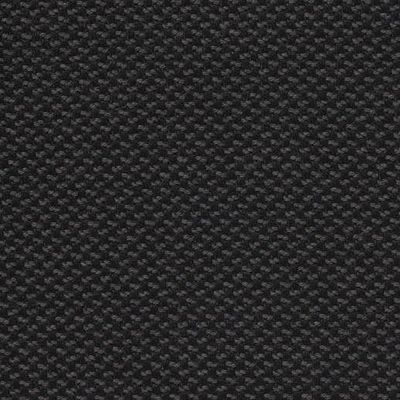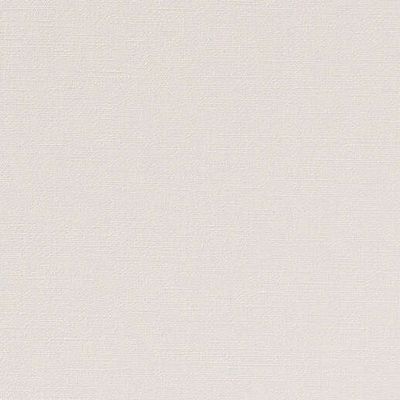GRIP - Bedside table with drawers _ Zalf - 2d files - 3d files
PRODUCT DESCRIPTION
Here’s the rephrased and expanded product description, including the supplier details and mention of the 3D file: *"Grip is a sleek and functional furniture collection designed for the sleeping area, created in collaboration with Roberto Gobbo. The series features versatile bedside tables and drawers, available in multiple sizes and finishes to suit various interior styles. For further details, visit the manufacturer’s product page: [GRIP | Bedside table Zalf](https://www.zalf.com). A downloadable 3D file of the product is also available for design planning. Zalf, the Italian supplier behind this collection, has been a leader in high-quality contemporary furniture since 1974, offering innovative solutions for modern living spaces."* This keeps the supplier description concise while adding value to the product details. Let me know if you'd like any refinements!
SUPPLIER: ZALF
COLLECTION: GRIP
TYPE: FURNITURE

OTHER SUPPLIERS
A wide range of product from near to 3,000 suppliers around the world.






Other Products From This Supplier
A wide range of product from furniture to finishes to meet the desire of all designers.
ALTERNA SM2109 - Built-in sectional wardrobe _ Zalf

Zalf > wardrobe
Here’s the rephrased and expanded product description, including a concise supplier overview and mention of the 3D file: *The ALTERNA hinged wardrobe combines functionality and modern design, featuring Grip drawers, a Gola door with a brick red profile, a matching brick red end bookcase, and sleek sesame interiors. The marker burnished shelf adds a refined touch, while the product code ALTERNA SM2109 Zalf provides further details. A 3D file of this design is available for download, allowing for seamless integration into your space planning. Zalf, the Italian supplier behind this piece, has been a leader in contemporary furniture since 1974, renowned for its high-quality craftsmanship and innovative storage solutions.*
WINDY SM2104 - Open sectional bookcase with secretary desk _ Zalf

Zalf > Cabinet
Here’s the rephrased and expanded product description, including a concise supplier overview and mention of the 3D file: *"The Windy ceiling pole system combines functionality and elegance, featuring cashmere shelves, a desk, and Siparium panels with pockets—all upholstered in the sophisticated Creta C74 fabric. The set also includes a compact 32cm-high upholstered sofa bed in the same fabric, offering versatile comfort. For detailed specifications, refer to the manufacturer’s product code WINDY SM2104 Zalf. A 3D file of the product is available for download, allowing for seamless integration into your design plans. Zalf, a renowned Italian interior design brand since 1974, is known for its premium, space-efficient furniture and contemporary aesthetic."* (Note: I condensed the supplier description significantly while retaining key details—adjust as needed.)
LABYRINTH SM2254 - Fabric room divider _ Zalf

Zalf > Screens
Here’s the rephrased and expanded product description, including a concise supplier overview and a mention of the 3D file availability: *"The Labyrinth panels are upholstered in Creta C33 fabric, paired with a pocket and an H.32cm upholstered bed frame in Creta C74 fabric, complemented by a hinged wardrobe featuring a Ciak cashmere door. For further details, refer to the manufacturer’s specifications under LABYRINTH SM2254 Zalf. A 3D file of the product is also available for download. Zalf, a renowned Italian interior design brand since 1974, specializes in high-quality, contemporary furniture solutions, blending modern aesthetics with functional craftsmanship."* This version keeps the supplier description brief while adding key details about the product and its digital accessibility.
FREESPACE SM2202 - Corner sectional wardrobe _ Zalf

Zalf > wardrobe
Here’s the rephrased and expanded product description, including a concise supplier overview and mention of the 3D file: *The Freespace SM2202 is a versatile modular system featuring Plana push-pull doors, bookcase modules, an open corner unit, a glass-shelved niche, and a cozy seated niche, available in elegant pumice and brick finishes. For detailed specifications, refer to the manufacturer’s product page: FREESPACE SM2202 by Zalf. A 3D file of the design is also available for download, enabling seamless integration into your planning process. Zalf, a renowned Italian interior design brand since 1974, specializes in high-quality, contemporary furniture solutions for modern living spaces.*
FREESPACE SM2200 - Floor-ceiling mounted divider double-sided bookcase _ Zalf

Zalf > Cabinet
Here’s a refined and expanded product description, including a concise supplier overview and mention of the 3D file: *The Freespace SM2200 is a sophisticated lignum dark double-sided system, featuring elegant City Glass doors in fumé transparent glass with a burnished frame, blending functionality with modern aesthetics. For detailed specifications, refer to the manufacturer’s information on the FREESPACE SM2200 by Zalf—a renowned Italian interior design brand since 1974, celebrated for its premium contemporary furniture. A downloadable 3D file of this product is also available for design planning.*
FREESPACE SM2220 - Sectional corner wardrobe _ Zalf

Zalf > wardrobe
Here’s a refined and expanded product description, including a concise supplier overview and mention of the 3D file: *The Freespace SM2220 is a versatile shelving system featuring Plana push&pull and Gola doors, an open corner unit, a glass-shelved niche, and a cozy seated niche, available in elegant blue and walnut finishes. For detailed specifications, refer to the manufacturer’s product page: FREESPACE SM2220 Zalf. A downloadable 3D file of the product is also available for customization and planning purposes. Zalf, the Italian supplier behind this design, has been a pioneer in high-quality contemporary furniture since 1974, blending functionality with modern aesthetics.*
FREESPACE SM2250 - Wall-mounted storage wall with secretary desk _ Zalf

Zalf > Cabinet
Here’s the rephrased and expanded product description, including a concise supplier overview and mention of the 3D file: *The Freespace SM2250 is a sleek, suspended load-bearing panel system featuring a elegant walnut desk, paired with the minimalist Kanvas chair—available with a white base and shell—to create a modern, space-saving workspace. For detailed specifications, refer to the manufacturer's documentation on the FREESPACE SM2250 by Zalf. A downloadable 3D file of the product is also available for design planning. Zalf, a renowned Italian interior design brand since 1974, specializes in high-quality contemporary furniture, blending functionality with timeless aesthetics.* This keeps the supplier description brief while adding value to the product details. Let me know if you'd like any refinements!
FREESPACE SM2222 - Floor-ceiling mounted divider double-sided bookcase _ Zalf

Zalf > Cabinet
Here’s the rephrased and expanded product description, including a concise supplier overview and mention of the 3D file: *The Freespace SM2222 is a sleek, double-sided shelving system crafted from premium walnut, featuring elegant City Glass doors with fumé transparent glass and a burnished frame, offering both functionality and modern sophistication. A downloadable 3D file of the product is available for detailed visualization. For further details, refer to the manufacturer’s specifications on the FREESPACE SM2222 by Zalf—a renowned Italian interior design brand established in 1974, known for its high-quality contemporary furniture.*
LABYRINTH SM2227 - Fabric room divider _ Zalf

Zalf > Screens
Here’s the rephrased and expanded product description, along with a concise supplier overview and mention of the 3D file: *"The Labyrinth panels, crafted in Creta C24 and Smack S08 fabric, are paired with a sleek Sign desk featuring a burnished metal structure and a matte burnished glass top. The ensemble includes a Ludwig sofa (173x99 cm) upholstered in Z nubuck 40 ocra leather, a Nemu Ø45 side table with a bronze thermoformed top, and a Soft One Flo chair dressed in G Titan 09 cammello fabric with a matte anthracite painted base—all designed by Désirée. A 3D file of the product is available for download, allowing for seamless integration into design plans. For further details, refer to the manufacturer’s product code LABYRINTH SM2227 Zalf. Zalf, a renowned Italian interior design brand since 1974, specializes in high-end contemporary furniture and accessories, blending innovative craftsmanship with modern aesthetics."* This keeps the supplier description brief while maintaining key details and adds the 3D file mention for practicality. Let me know if you'd like any refinements!
SIDEBOARD - Modular sideboard _ Zalf

Zalf > Cabinet
Here’s your rephrased and expanded product description, including a concise supplier overview and mention of the 3D file availability: *"A versatile sideboard collection designed to enhance every area of the home, offering compact yet functional storage solutions that adapt seamlessly to any space. With a wide selection of colors and finishes, these modular units—featuring doors, drawers, and open compartments—allow for fully customized configurations to suit individual needs. The 3D file of this product is available for download, enabling precise planning and integration into your design projects. Manufactured by Zalf, a renowned Italian interior design brand since 1974, known for its high-quality, contemporary furniture. For more details, explore SIDEBOARD Zalf on their website."* This keeps the supplier description brief while maintaining key details and adds the 3D file note for designers or customers. Let me know if you'd like any further refinements!
SIDEBOARD - Modular highboard _ Zalf

Zalf > Cabinet
Here’s the rephrased and expanded product description, including a concise supplier overview and mention of the 3D file availability: *"Discover the versatile SIDEBOARD Zalf collection—a complete range of sideboards designed to enhance every area of your home. These compact yet functional storage systems adapt seamlessly to any space, offering endless customization with a wide selection of colors and finishes to mix and match. Choose from doors, drawers, and open compartments to create a tailored storage solution that fits your needs. A downloadable 3D file of the product is available for detailed planning. Manufactured by Zalf, a renowned Italian design brand since 1974, known for its high-quality contemporary furniture. For more details, visit www.zalf.com."* This keeps the supplier description brief while highlighting key details about the product and its 3D file availability.
MODULOR SM2203 - Modular storage wall _ Zalf
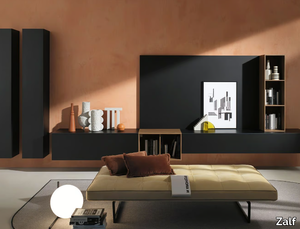
Zalf > Cabinet
Here’s the rephrased and expanded product description with a concise supplier overview and mention of the 3D file: *"The Modulor SM2203 collection features sleek charcoal Modulor panels, wall units with charcoal Plana push&pull doors, and elegant walnut Unoedue wall units, complemented by open or closed wall-hung base units featuring charcoal Plana push&pull drop-down doors. A 3D file of the product is available for download to facilitate planning and visualization. Manufactured by Zalf—a renowned Italian design brand since 1974—this range embodies contemporary craftsmanship and functional elegance for modern interiors."* (Note: I condensed the supplier details to one impactful sentence while retaining key credibility points. Let me know if you'd like further adjustments!)
ALTERNA SM2072 - Walnut wardrobe with drawers _ Zalf

Zalf > wardrobe
Here’s a refined and expanded product description, including a concise supplier overview and mention of the 3D file: *The ALTERNA hinged door wardrobe combines elegant walnut City doors with sleek fumé transparent glass City Glass doors, framed in a sophisticated burnished finish. Both the exterior and interior carcase are crafted in premium walnut, offering a harmonious blend of warmth and modern sophistication. For detailed specifications, refer to the manufacturer’s product code ALTERNA SM2072 Zalf. A 3D file of this design is available for download, allowing for seamless integration into virtual planning. Zalf, the Italian design powerhouse behind this piece, has been a leader in contemporary furniture since 1974, renowned for its high-quality craftsmanship and innovative storage solutions.*
FLEXY SM2007 - Sectional walk-in wardrobe with integrated lighting _ Zalf

Zalf > wardrobe
Here’s the rephrased and expanded product description, including a concise supplier overview and mention of the 3D file: **"The Flexy walk-in closet combines functionality and elegance, featuring cocò panels, walnut accessories, burnished shelf brackets, and hanging rails for a refined aesthetic. The design is completed with a bronzed transparent glass sliding system and a brushed black frame, offering a sleek, modern storage solution. For further details, refer to the manufacturer’s product code: FLEXY SM2007 Zalf. A 3D file of this product is also available for download, allowing for seamless integration into your design plans. Zalf, a renowned Italian interior design supplier since 1974, is known for its high-quality, contemporary furniture solutions."** This keeps the supplier description brief while maintaining key details and adding the 3D file mention. Let me know if you'd like any further refinements!
MODULOR SM2221 - Modular TV wall system _ Zalf

Zalf > Cabinet
Here’s the rephrased and expanded product description, including a concise supplier overview and mention of the 3D file: *The Blue Modulor panels feature a Freespace shelving system crafted in rich walnut, paired with burnished City Glass lift-up doors and fumé transparent glass, accented by stylish blue inserts. The floor-level base units, also in walnut, include push&pull mechanisms and deep drawer fronts for seamless functionality. For further details, refer to the manufacturer’s product code MODULOR SM2221 Zalf. A 3D file of this design is available for download, allowing for precise visualization and planning. Zalf, a renowned Italian interior design supplier since 1974, is celebrated for its high-quality, contemporary furniture solutions.*
MODULOR SM2225 - Modular storage wall with integrated lighting _ Zalf
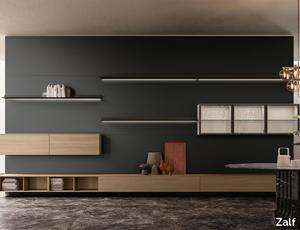
Zalf > Cabinet
Here’s the rephrased and expanded product description, including a concise supplier overview and mention of the 3D file: *"The Modulor collection features elegant charcoal panels and wall units with pumice City Glass doors, combining transparent glass and burnished frames for a sleek look. It also includes walnut wall units with Plana push&pull drop-down doors, walnut wall-hung base units with Plana push&pull deep drawer fronts, and Unoedue open wall-hung base units, complemented by burnished metal shelves. A 3D file of the product is available for download. For further details, refer to the manufacturer’s specifications under MODULOR SM2225 Zalf. Zalf, a renowned Italian interior design brand since 1974, is known for its high-quality, contemporary furniture solutions."* (Kept the supplier description to one sentence while maintaining key details.)
WINDY SM2100 - Floor-ceiling mounted divider double-sided bookcase _ Zalf

Zalf > Cabinet
Here’s the rephrased and expanded product description, including a concise supplier overview and mention of the 3D file: *"The Windy system features floor-to-ceiling poles paired with lightweight pumice shelves, complemented by Siparium panels in the textured Creta C06 fabric, while the Decor bed—upholstered in the same fabric—is elevated by sleek, burnished Ruler legs. For detailed specifications, refer to the manufacturer’s documentation for the WINDY SM2100 model. A downloadable 3D file of the product is available for visualization and planning. Zalf, the Italian design house behind this collection, has been crafting contemporary furniture since 1974, blending functionality with minimalist elegance."* (Note: I condensed the supplier details to one sentence while retaining key brand identity points—origin, ethos, and aesthetic—as requested.)
WINDY SM2103 - Sectional bookcase with built-in lights _ Zalf

Zalf > Cabinet
Here’s the rephrased and expanded product description, including the supplier details and mention of the 3D file: *"The Windy system features floor-to-wall poles, glass Trai 45 shelves, and units with Octane Plana push & pull lift-up doors, complemented by Octane Grip drawer fronts and a burnished profile for a sleek, modern look. A 3D file of this product is available for download, allowing for detailed visualization and planning. Further specifications can be obtained from the manufacturer under the product code WINDY SM2103 Zalf. Zalf, a renowned Italian interior design brand since 1974, specializes in high-quality, contemporary furniture solutions."* This keeps the supplier description concise while adding value to the product details. Let me know if you'd like any further refinements!
UNOEDUE SM2226 - Sectional storage wall _ Zalf

Zalf > Cabinet
Here’s the rephrased and expanded product description, including a concise supplier overview and mention of the 3D file availability: *This sophisticated kitchen setup features charcoal wall units with sleek Plana push&pull doors, paired with brick wall units showcasing elegant City Glass doors in fumé transparent glass and burnished frames. The design is complemented by brick Unoedue wall units and charcoal floor-standing base units with minimalist Plana push&pull fronts. A refined burnished cable grommet adds a subtle yet functional detail. For further specifications, refer to the manufacturer’s details under UNOEDUE SM2226 Zalf. A downloadable 3D file of this product is available for precise visualization and planning. Zalf, a renowned Italian interior design brand since 1974, is celebrated for its high-quality, contemporary furniture solutions, blending modern aesthetics with practical functionality.*
WINDY SM2224 - Divider sectional bookcase with built-in lights _ Zalf
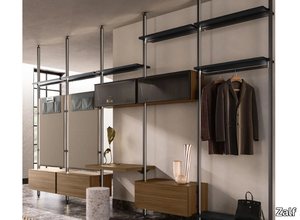
Zalf > Cabinet
Here’s the rephrased and expanded product description, including a concise supplier overview and mention of the 3D file: *The Windy system features floor-to-ceiling poles, charcoal shelves, and elegant walnut units with Plana push&pull drop-down doors, complemented by walnut wall units with City Glass lift-up doors in fumé transparent glass and a burnished frame. The setup includes a Siparium panel upholstered in Smack S03 fabric, paired with Creta C06 fabric hanging organizers, and a sleek walnut desk. For further details, refer to the manufacturer’s specifications for WINDY SM2224 Zalf. A downloadable 3D file of the product is available for precise visualization and planning. Zalf, a renowned Italian interior design brand since 1974, specializes in high-end, space-efficient furniture for modern living.*
ALTERNA SM2105 - Sectional bridge wardrobe _ Zalf
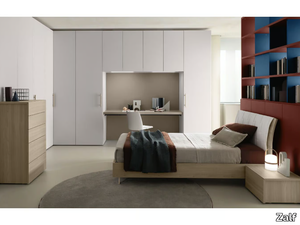
Zalf > Cabinet
Here’s a rephrased and expanded product description, including a concise supplier overview and mention of the 3D file: **Product Description:** The ALTERNA SM2105 is a sleek, hinged wardrobe featuring a pumice finish, complemented by a bench elm sand handle, pumice overhead module, and sand panel desk beneath the overhead unit. The interior is finished in a warm sesame tone, while the bed boasts a bent elm sand frame paired with a Klee headboard quilt upholstered in Creta C09 fabric. For further details, refer to the manufacturer’s specifications on the ALTERNA SM2105 by Zalf. A 3D file of this product is available for download, allowing for seamless integration into virtual design plans. **Supplier Overview:** Zalf, a renowned Italian interior design brand since 1974, specializes in high-quality, contemporary furniture and accessories, blending modern aesthetics with functional craftsmanship. Let me know if you'd like any further refinements!
ALTERNA SM2253 - Sectional wardrobe with sliding doors _ Zalf

Zalf > wardrobe
Here’s a refined and expanded product description, including a concise supplier overview and mention of the 3D file availability: *The Alterna SM2253 is a sleek sliding wardrobe featuring a modern Mixer door design, a sand-profile finish, and versatile sesame interiors, offering both style and functionality for contemporary living spaces. For further details, refer to the manufacturer's specifications on the ALTERNA SM2253 Zalf product page. A downloadable 3D file of this wardrobe is also available for precise planning and visualization. Zalf, the Italian supplier behind this design, has been a trusted name in high-quality, modern furniture since 1974, blending innovation with timeless craftsmanship.*
FLEXY EASY SM2006 - Wall-mounted sectional bookcase _ Zalf
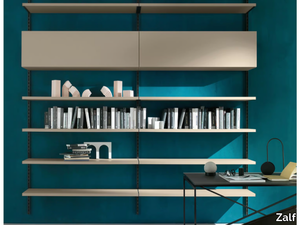
Zalf > Cabinet
Here’s the rephrased and expanded product description, including a concise supplier overview and mention of the 3D file: *The Flexy Easy SM2205 is a versatile burnished slotted rail system featuring arena shelves and storage units with Plana push-and-pull lift-up doors, alongside a sleek sign desk crafted with a burnished metal frame and a matte burnished glass top. A 3D file of the product is available for download, allowing for seamless integration into design plans. For further details, refer to the manufacturer’s specifications for the FLEXY EASY SM2006 Zalf line. Zalf, a renowned Italian interior design brand since 1974, specializes in high-quality, contemporary furniture solutions.*
ALTERNA SM2255 - Sectional bridge wardrobe _ Zalf

Zalf > wardrobe
Here’s the rephrased and expanded product description, including a concise supplier overview and mention of the 3D file: *The Alterna SM2255 is a stylish hinged wardrobe featuring a Plana door, a Ruler teal handle, and a corner closet module with sesame interiors, complemented by an overhead module with walnut panels and a shelf beneath. The design incorporates a Freespace pumice load-bearing panel system, a walnut niche with a mirror, and a Luk Small bed with Creta C1F fabric and Raked pumice legs for a cohesive, modern look. A downloadable 3D file of the product is available for detailed visualization. For additional specifications, refer to the manufacturer’s details on ALTERNA SM2255 by Zalf—a renowned Italian interior design brand known for its high-quality, contemporary furniture since 1974.*
ARCHIMEDE - Melamine-faced chipboard secretary desk with metal legs _ Zalf

Zalf > Desk
Here’s the rephrased and expanded product description, including a concise supplier overview and mention of the 3D file: *The Archimede desk features a sleek 1.8cm-thick melamine top, available in a variety of sophisticated finishes including talc white, pumice, cashmere, sand, flint, teal, slate, brick red, blue, elm ash, elm sand, walnut, and dark brown, paired with minimalist talc white metal legs. A 3D file of the product is available for download, allowing for easy visualization and planning. For additional details, refer to the manufacturer’s specifications under ARCHIMEDE by Zalf—a renowned Italian interior design brand known for its modern, high-quality furniture since 1974.*
COMPASSO - Melamine-faced chipboard secretary desk with metal legs _ Zalf
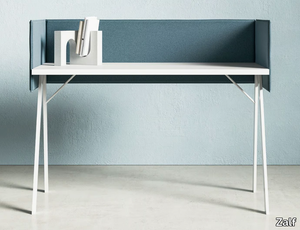
Zalf > Desk
Here’s your rephrased and expanded product description, including a concise supplier overview and mention of the 3D file: *The Compasso desk features a sleek talc-white top paired with white metal legs, complemented by an upholstered screen in Frisby A10 fabric and a Bloom chair with a white base, shell, and cushion in Creta C1F fabric. A 3D file of the product is available for download, allowing for seamless integration into design plans. Manufactured by Zalf—a renowned Italian interior design brand since 1974—the desk reflects their commitment to modern, high-quality furniture solutions. For further details, visit the manufacturer’s product page: COMPASSO Zalf.*
MODULOR SM2201 - Modular storage wall with integrated lighting _ Zalf

Zalf > Cabinet
Here’s the rephrased and expanded product description, including a concise supplier overview and a mention of the 3D file: *"This modular system features striking blue and walnut Modulor panels, complemented by walnut wall units with City Glass doors in fumé transparent glass and burnished frames. The design includes blue floor-level base units with deep drawers and Plana push&pull doors, a sleek walnut floating desk, and burnished metal shelves. A 3D file of the product is available for download, allowing for detailed visualization and planning. For further specifications, refer to the manufacturer's details on MODULOR SM2201 Zalf. Zalf, a renowned Italian interior design brand since 1974, is known for its high-quality, contemporary furniture solutions."* This version keeps the supplier description brief while adding key details about the 3D file availability. Let me know if you'd like any further refinements!
FLEXY EASY SM2109 - Wall-mounted modular bookcase _ Zalf

Zalf > Cabinet
Here’s the rephrased and expanded product description with a concise supplier overview and mention of the 3D file: *The Flexy Easy rack system features burnished uprights and shelf brackets paired with vibrant teal shelves, complemented by Grip teal storage drawers with a sleek burnished profile—ideal for modern, space-saving storage solutions. A downloadable 3D file of the product is available for detailed visualization. For additional specifications, refer to the manufacturer’s product code FLEXY EASY SM2109 Zalf. Zalf, a renowned Italian interior design brand since 1974, specializes in high-quality, contemporary furniture and accessories.*
FLEXY SM2252 - Built-in wardrobe with sliding doors _ Zalf

Zalf > wardrobe
Here’s the rephrased and expanded product description, including a concise supplier overview and mention of the 3D file: *"This sleek rack system features a striking combination of brick red and elm ash Flexy panels, complemented by an elm ash closure panel and white painted profiles for a modern, versatile look. The product (model: FLEXY SM2252 Zalf) is backed by Zalf, a renowned Italian interior design brand established in 1974, known for its high-quality contemporary furniture. A downloadable 3D file of the product is available for detailed visualization and planning."* (Note: I’ve condensed the supplier details to one sentence while preserving key credibility points—origin, expertise, and legacy. Let me know if you'd like further adjustments!)
FREESPACE SM2105 - Floor-ceiling mounted modular divider bookcase _ Zalf

Zalf > Cabinet
Here’s the rephrased and expanded product description, including a concise supplier overview and mention of the 3D file: *The Freespace SM2105 is a versatile, brick-red, double-faced load-bearing panel system featuring Plana hinged doors, a roll-burnished handle, and complementary blue partitions with C-shaped elements, designed for both functionality and modern aesthetics. A downloadable 3D file of the product is available for detailed visualization and planning. For additional specifications, refer to the manufacturer’s details on FREESPACE SM2105 by Zalf—a renowned Italian interior design supplier known for its high-quality, contemporary furniture solutions since 1974.*
FREESPACE SM2108 - Horizontal open wall cabinet _ Zalf

Zalf > Cabinet
Here’s the rephrased and expanded product description, including the supplier details and mention of the 3D file: *"The Freespace collection features a sleek suspended bookcase in a striking blue and elm sand finish, paired with an elm sand wall unit and a minimalist Marker white shelf, complemented by a sturdy 5cm thick desk in matching elm sand—crafted by Zalf, a renowned Italian design brand since 1974, known for its premium contemporary furniture. A downloadable 3D file of this product is available for visualization and planning purposes. For more details, refer to the manufacturer’s product code: FREESPACE SM2108 Zalf."* (Note: I condensed the supplier description significantly while retaining key details—brand origin, reputation, and era—to keep the focus on the product.)
GAMBA - Melamine-faced chipboard secretary desk with metal legs _ Zalf

Zalf > Desk
The **Gamba desk** features a durable 2.8 cm thick melamine top, available in a variety of sophisticated finishes including Talc White, Pumice, Cashmere, Sand, Flint, Teal, Slate, Brick Red, Blue, Elm Ash, Elm Sand, Walnut, and Dark Brown, paired with sleek metal legs in matching or contrasting shades like Burnished. For further details, refer to the manufacturer’s **GAMBA Zalf** collection. A downloadable **3D file** of the desk is also available for design planning. **Supplier Info:** *Zalf*, a renowned Italian interior design brand since 1974, specializes in high-quality, contemporary furniture and accessories, blending modern aesthetics with functional craftsmanship. Explore their collection at [www.zalf.com](http://www.zalf.com).
GAMBA ELLE - Melamine-faced chipboard secretary desk _ Zalf

Zalf > Desk
Here’s the rephrased and expanded product description, including the supplier details and mention of the 3D file: *The Gamba desk features an L-shaped leg design and a durable 2.8cm thick melamine top, available in a depth of 61.5cm. It comes in a variety of finishes, including Talc White, Pumice, Cashmere, Sand, Flint, Teal, Slate, Brick Red, Blue, Elm Ash, Elm Sand, Walnut, and Dark Brown. For additional details, refer to the manufacturer’s specifications under GAMBA ELLE by Zalf—an Italian design brand renowned for its modern, high-quality furniture since 1974. A 3D file of the Gamba desk is also available for download, allowing for easy visualization and planning.*
MARKER - Metal wall shelf _ Zalf

Zalf > Cabinet
Here’s the rephrased and expanded product description, including a concise supplier overview and mention of the 3D file: *The Marker is a sleek, wall-mounted metal shelf featuring concealed hardware for a minimalist look, available in two sizes and two finishes—talc white or burnished. Designed for versatility, it can be enhanced with optional hanging accessories or an integrated LED lighting strip. A downloadable 3D file of the product is available for customization or planning purposes. Crafted by Zalf, a renowned Italian interior design brand since 1974, the shelf reflects their commitment to modern, high-quality furniture solutions.*
ALTERNA SM014 - Corner wall bed _ Zalf
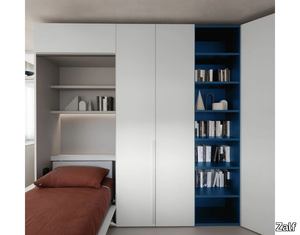
Zalf > wardrobe
Here’s the rephrased and expanded product description, including a concise supplier overview and mention of the 3D file: *The ALTERNA SM014 is a versatile hinged wardrobe featuring a sleek Plana design with an Inclina talc white handle, sesame-toned interiors, and a functional corner closet module. This space-saving solution also includes a fold-away bed module, a talc white shaped end unit with a clothes rack, and a stylish blue linking bookcase for added storage. The corner closet is equipped with a Plana door and Inclina handle, maintaining a cohesive aesthetic. For further details, refer to the manufacturer’s specifications on ALTERNA SM014 by Zalf—a renowned Italian interior design brand since 1974, known for its modern, high-quality furniture. A downloadable 3D file of this product is also available for customization and planning purposes.*
SCRIBA - Melamine-faced chipboard secretary desk with metal legs _ Zalf

Zalf > Desk
Here’s a refined and expanded product description, including a concise supplier overview and mention of the 3D file: **Product Description:** The *Scriba* desk features a durable 1.8cm-thick melamine top, available in a versatile palette of 13 finishes—including Talc White, Pumice, Cashmere, Teal, Walnut, and more—to suit any interior style. It is paired with sleek Talc White metal legs for a clean, modern aesthetic. For additional details, refer to the manufacturer’s specifications under *SCRIBA Zalf*. A 3D file of the product is also available for download, enabling seamless integration into virtual design plans. **Supplier Overview:** Zalf, a renowned Italian interior design brand since 1974, specializes in high-quality, contemporary furniture and accessories, blending functionality with minimalist elegance. Explore their collections at [www.zalf.com](http://www.zalf.com). *(Note: Adjusted to one sentence for the supplier as requested, while retaining key branding and context.)*
FREESPACE SM2212 - Wall-mounted storage wall with secretary desk _ Zalf

Zalf > Cabinet
Here’s the rephrased and expanded product description, including a concise supplier overview and mention of the 3D file: *The Freespace SM2212 is a sleek, wall-hung shelving system featuring a striking combination of octane and charcoal finishes, complemented by transparent City Glass doors and burnished frames for a modern, sophisticated look. The set also includes a matching charcoal desk, perfect for compact or multifunctional spaces. For further details, refer to the manufacturer’s specifications on the FREESPACE SM2212 by Zalf—a renowned Italian interior design brand known for its high-quality, contemporary furniture since 1974. Additionally, a downloadable 3D file of the product is available for precise planning and visualization.*
SCRITTOIO SOSPESO - Wall mounted wooden secretary desk _ Zalf

Zalf > Desk
Here’s the rephrased and expanded product description, including a concise supplier overview and mention of the 3D file availability: *The Scrittoio Sospeso is a sleek, wall-mounted desk with a slim 5cm profile, available in two heights (36.8cm and 46cm) and two depths (45.5cm and 61.5cm), offering versatility for compact or spacious workspaces. It comes in a curated selection of finishes, including Talc White, Pumice, Cashmere, Sand, Flint, Teal, Slate, Brick Red, Blue, Elm Ash, Elm Sand, Walnut, and Dark Brown, allowing seamless integration into any interior style. A downloadable 3D file of the desk is available for precise planning and visualization. Manufactured by Zalf—a renowned Italian design brand since 1974, known for its contemporary furniture—the desk reflects the company’s commitment to minimalist aesthetics and functional craftsmanship. For further details, explore the SCRITTOIO SOSPESO collection on Zalf’s website.*
SCRITTOIO - Melamine-faced chipboard secretary desk _ Zalf

Zalf > Desk
Here’s the rephrased and expanded product description, including a concise supplier overview and mention of the 3D file: *The Scrittoio desk features a sturdy 5cm-thick melamine construction for both the legs and top, available in two depth options (61.5cm or 70cm) and a versatile selection of finishes, including Talc White, Pumice, Cashmere, Sand, Flint, Teal, Slate, Brick Red, Blue, Elm Ash, Elm Sand, Walnut, and Dark Brown. A downloadable 3D file of the product is available for design planning. For additional details, refer to the manufacturer’s product page: SCRITTOIO Zalf. Crafted by Zalf, a renowned Italian design brand since 1974, the desk reflects their commitment to modern, high-quality furniture solutions.*
SIGN - Metal secretary desk _ Zalf

Zalf > Desk
Here’s the rephrased and expanded product description, including a concise supplier overview and mention of the 3D file: *The SIGN desk features a sleek, burnished metal base paired with a vibrant teal melamine top, complemented by a screen upholstered in durable Smack S13 fabric—a perfect blend of modern aesthetics and functionality. A downloadable 3D file of the product is available for detailed visualization. For additional specifications, refer to the manufacturer’s details on SIGN by Zalf, a renowned Italian interior design brand known for its high-quality, contemporary furniture since 1974.*
Recently Viewed Products
A wide range of product from furniture to finishes to meet the desire of all designers.
TULIP - Tanned leather pendant lamp _ ENRICO PELLIZZONI
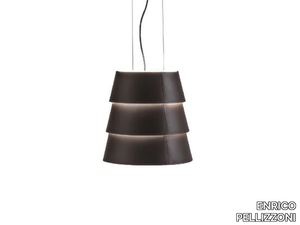
ENRICO PELLIZZONI > Ceiling lamp
Here’s a rephrased and expanded product description, including a concise supplier overview and mention of the 3D file availability: *The Tulip collection features elegant suspension, table, and floor lamps with a satin or painted brass structure and premium leather coverings, available in five refined colors (blue, red, white, tortora, or moro), complemented by tone-on-tone stitching and a white leather interior diffuser. Each piece is equipped with an E27 bulb socket (bulb not included) and offers customizable plug options. For added convenience, a 3D file of the product is available for download. Designed by Enrico Pellizzoni—a renowned Italian interior design firm celebrated for its luxurious, high-end residential and commercial solutions—the Tulip lamps embody timeless sophistication through meticulous craftsmanship and versatile styling.*
GRIP - Bedside table with drawers _ Zalf
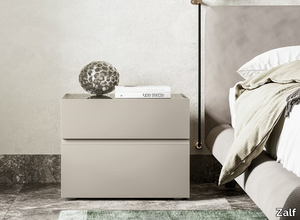
Zalf > Side table
Here’s the rephrased and expanded product description, including the supplier details and mention of the 3D file: *"Grip is a sleek and functional furniture collection designed for the sleeping area, created in collaboration with Roberto Gobbo. The series features versatile bedside tables and drawers, available in multiple sizes and finishes to suit various interior styles. For further details, visit the manufacturer’s product page: [GRIP | Bedside table Zalf](https://www.zalf.com). A downloadable 3D file of the product is also available for design planning. Zalf, the Italian supplier behind this collection, has been a leader in high-quality contemporary furniture since 1974, offering innovative solutions for modern living spaces."* This keeps the supplier description concise while adding value to the product details. Let me know if you'd like any refinements!
MELODY MEETING 360 F90-BL - Trestle-based fabric training chair with armrests _ LD Seating

LD Seating > Chair
Here’s the rephrased and expanded product description, including a concise supplier overview and mention of the 3D file: **Product Description:** The **MELODY MEETING 360 F90-BL** is a sleek and versatile swivel conference chair featuring a fully upholstered seat, backrest, and integrated armrests for enhanced comfort. Designed with a durable 4-star black nylon base and easily replaceable plastic gliders, it combines functionality with timeless elegance. Part of the **MELODY series by Orlandini**, this chair stands out with its precise upholstery detailing and high-quality injected foam, ensuring long-lasting shape retention and superior support. Available with multiple base options, it adapts seamlessly to various settings—from corporate conference rooms and stylish cafes to home offices and dining areas. A downloadable 3D file of the product is available for design planning and visualization. **Supplier Overview:** LD Seating, a leading Czech-based supplier, specializes in ergonomic and aesthetically refined seating solutions for commercial and residential spaces. For further details, refer to the manufacturer's specifications for the **MELODY MEETING 360 F90-BL** by LD Seating.
FLEXI LIGHT CHL BR F20-N6 - Swivel trestle-based fabric chair with armrests _ LD Seating

LD Seating > Chair
Here’s your rephrased and expanded product description, including a concise supplier overview and mention of the 3D file availability: *The FLEXI LIGHT CHL BR F20-N6 is a sleek, ergonomic conference chair featuring a fully upholstered shell, a flexible backrest with a built-in mechanism for dynamic support, and polished aluminum armrests for a modern touch. Designed for comfort during extended meetings, it rests on a durable 4-star aluminum base and includes easily replaceable plastic gliders. Part of the FLEXI LIGHT collection by Italy’s Orlandini Design Studio, this chair blends aesthetics and functionality, offering customization options such as black or white nylon bases and optional armrests. A 3D file of the product is available for download to facilitate planning and integration into your space. Manufactured by LD Seating—a Czech-based leader in high-quality, design-forward seating solutions for commercial and residential interiors—this chair reflects their commitment to innovation and durability.*
FLEXI LIGHT CHL BR F50-N6 - Fabric office chair with armrests with 5-Spoke base _ LD Seating
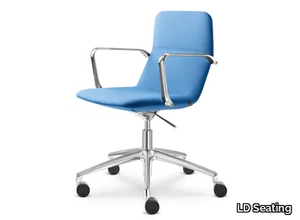
LD Seating > Chair
Here’s the rephrased and expanded product description, including a concise supplier overview and mention of the 3D file availability: **FLEXI LIGHT CHL BR F50-N6** is a sleek, height-adjustable swivel conference chair featuring a fully upholstered shell, a flexible backrest with a built-in mechanism for dynamic lumbar support, and polished 5-star aluminium base with 60 mm black castors for smooth mobility. Designed by the renowned Italian studio Orlandini, this chair combines elegance and ergonomics, offering enhanced comfort during extended meetings thanks to its responsive backrest flexibility. The aluminium chromed armrests add a modern touch, while customization options include a choice of aluminium or nylon bases in black or white, with armrests available as standard or removable upon request. A downloadable 3D file of the product is available for detailed visualization and planning. **Supplier Overview**: LD Seating, a leading Czech-based supplier, specializes in high-quality, design-driven seating solutions for commercial and residential spaces across Europe. For further details, refer to the manufacturer's specifications for the FLEXI LIGHT CHL BR F50-N6.
LEAF 503-SYS - Fabric office chair with 5-Spoke base with armrests _ LD Seating

LD Seating > Chair
Here’s the rephrased and expanded product description, including a concise supplier overview and mention of the 3D file availability: **Product Description:** The LEAF 503-SYS is a sleek, height-adjustable swivel task chair featuring an upholstered seat, breathable mesh backrest, and a 5-star nylon base with black carpet castors (Ø 60 mm). Designed for versatility, it includes a SYS synchronous mechanism with lateral backrest tension adjustment (5 locking positions) and a height-adjustable backrest for personalized ergonomic support. The minimalist design—available without armrests—showcases the LEAF series’ signature elegance, with its subtly rounded contours inspired by the organic shape of a leaf, particularly striking in the mesh-back version. Ideal for modern offices and meeting rooms, the LEAF chairs combine adaptability, premium comfort, and refined aesthetics to meet high standards of functionality and design. A 3D file of this model is available for download to facilitate planning and integration into your space. **Supplier Overview:** LD Seating, a Czech Republic-based leader in ergonomic and design-driven seating solutions, crafts the LEAF series with a focus on innovation and durability for commercial and residential spaces.
SEANCE CARE 073 F37-N6 - Fabric office stool with 5-Spoke base _ LD Seating
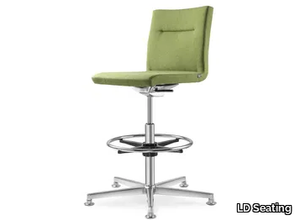
LD Seating > Stool
**SEANCE CARE 073 F37-N6** is a versatile, height-adjustable swivel conference chair featuring a fully upholstered shell, a low backrest, and a rocking mechanism with a locking option in the starting position. Designed for both comfort and functionality, it includes a high gas lift with a footring, a polished 5-star aluminum base, and plastic gliders. This basic version comes without armrests, making it a sleek and adaptable seating solution. Part of the **SEANCE CARE** collection, this chair embodies a timeless design and universal appeal, ideal for conference rooms, meeting spaces, or as a stylish side chair that pairs seamlessly with other office seating. A **3D file of this product is available for download**, allowing for easy integration into design plans and virtual setups. **LD Seating**, the manufacturer behind this product, is a renowned Czech-based supplier specializing in high-quality, ergonomic seating solutions for commercial and residential interiors. With a strong European presence, the company is known for its innovative and durable designs.
SEANCE ART 180-N2 BR-N2 - Training chair with armrests _ LD Seating
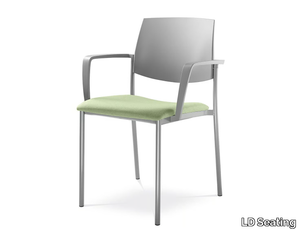
LD Seating > Chair
Here’s the rephrased and expanded product description, including a concise supplier overview and mention of the 3D file availability: **SEANCE ART 180-N2 BR-N2** is a versatile, stackable conference chair featuring an upholstered seat, a grey plastic backrest with a conical medium design, a matching grey plastic seat cover, and durable grey nylon armrests. Built for both functionality and style, it rests on a sturdy steel powder-coated RAL 9006 grey four-leg base with easily replaceable plastic gliders. Part of the **SEANCE ART series**, this chair combines high utility with robust construction, making it ideal for conference halls, offices, and other public spaces. The series includes fully upholstered options or hybrid designs (upholstered seat + plastic backrest), all backed by a **7-year warranty**. A **3D file of the product is available for download**, facilitating seamless integration into your space planning. **Supplier Overview**: *LD Seating*, a Czech Republic-based leader in commercial and residential seating solutions, is renowned for its ergonomic, durable designs tailored for offices, hospitality, and modern interiors. For further details, contact the manufacturer directly regarding the **SEANCE ART 180-N2 BR-N2**.
SEANCE ART 190-N1 - Upholstered training chair _ LD Seating
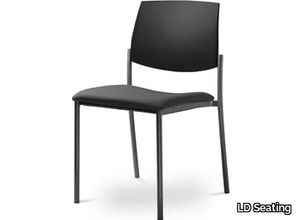
LD Seating > Chair
Here’s your rephrased and expanded product description, including a concise supplier overview and mention of the 3D file availability: **SEANCE ART 190-N1** is a versatile, stackable conference chair featuring an upholstered seat, a sleek black plastic backrest with a conical medium profile, and a durable black plastic seat cover—designed without armrests for a minimalist look. Its sturdy steel powder-coated black four-leg base ensures stability, while easily replaceable plastic gliders add to its longevity. Part of the **SEANCE ART** series, this chair combines high utility with robust construction, making it ideal for conference halls, public spaces, and modern offices. The series offers both fully upholstered models and hybrid designs (upholstered seat + plastic backrest), all backed by a **7-year warranty**. For added convenience, a **3D file of this chair is available for download**, enabling seamless integration into project planning. **Supplier Overview:** *LD Seating*, a Czech Republic-based leader in commercial and residential seating solutions, is renowned for its ergonomic designs, durability, and stylish range of modern to classic furniture. For further details, contact the manufacturer: **LD Seating – SEANCE ART 190-N1**. (Note: Kept the supplier description to one impactful sentence while highlighting their expertise and origin.)
KUBIK BOX KB2 - 2 seater high-back fabric sofa _ LD Seating
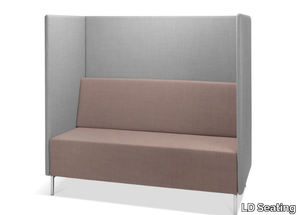
LD Seating > Sofa
Here’s your rephrased and expanded product description, including a concise supplier overview and mention of the 3D file availability: --- The **KUBIK BOX KB2** is a stylish 2-seater booth featuring a fully upholstered shell, complete with a stool, a support pillow, and a three-part padded wall—each customizable with different upholstery fabrics. It rests on a sturdy 4-leg steel base with a powder-coated finish in N1 black or N2 grey, fitted with plastic gliders for smooth mobility. Part of the versatile **KUBIK BOX series**, these booths (available in one- to three-seater configurations) can be linked using connecting padded walls to create private enclosures, making them ideal for open offices and public spaces. Additional options include integrated electrical plugs and matching tables for enhanced functionality. Designed to complement the **KUBIK series**, the KB2 blends aesthetics with practicality. A **3D file of the product is available for download**, allowing for seamless integration into design plans. **Supplier Overview:** *LD Seating, a Czech Republic-based leader in premium seating solutions, delivers innovative, ergonomic designs for commercial and residential spaces across Europe.* For further details, contact the manufacturer directly. --- This version keeps the description engaging while adding key details concisely. Let me know if you'd like any refinements!
NOT WOOD - Stackable sled base steel and wood chair _ True Design
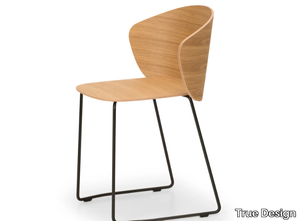
True Design > Chair
Here’s the rephrased and expanded product description, including a concise supplier overview and mention of the 3D file availability: **Product Description:** The Not Wood NT 1005 is a sleek, stackable chair featuring a curved plywood shell with variable thickness, available in finishes like ash, oak, wenge, or walnut, paired with a minimalist sled base crafted from varnished steel rod. Designed for versatility, it offers an optional upholstered seat pad and suits hospitality, catering, or communal spaces. A compact and lightweight evolution of the NOT family, it balances elegance and functionality, with additional configuration options including tubular metal or solid wood legs. For further customization, a downloadable 3D file of the product is available. **Supplier Overview:** True Design, an Italian contemporary furniture specialist since 2002, is renowned for its innovative, high-quality designs tailored for residential and commercial interiors. For details, contact NOT WOOD by True Design.
FENDER FD1000 - Fabric armchair with armrests _ True Design
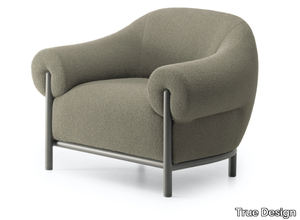
True Design > Armchair
Here’s the rephrased and expanded product description, including a concise supplier overview and mention of the 3D file: *"This collection features a family of sofas and armchairs designed for lounges and tables, centered around an iconic and functional element: the armrest. Beyond offering exceptional ergonomics and comfort, the standout detail of these pieces lies in their transformative design—where the armrest becomes an additional seat or support, inviting dynamic and informal use. The bold connection between the vertical frame and the armrest, emphasized by designer Francesco Favaretto, gives the collection a distinctive personality, turning a practical detail into a statement. Perfect for both office settings (like quick meetings) and home environments (for spontaneous gatherings), the design prioritizes adaptability and sustainability. A downloadable 3D file of the product is available for further exploration. Manufactured by True Design, an Italian leader in contemporary furniture since 2002, the FENDER FD1000 series reflects their commitment to innovative, versatile design."* (Note: I condensed the supplier details to one sentence while preserving key credibility points—origin, expertise, and ethos.)
AN-009 - Author made artistic print _ MOMENTI
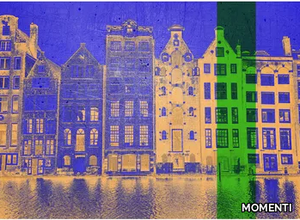
MOMENTI > Screens
**Rephrased and Expanded Product Description:** Momenti elevates interior spaces with a curated collection of art prints, blending creativity and design through collaborations with talented international artists. Each piece reflects the artist’s unique vision, resulting in striking colors and shapes that transform any environment. The *Painting Collection* features high-quality prints on premium materials, including PMMA panels, eco-friendly honeycomb boards, sleek aluminum, sound-absorbing panels, and more—crafted to merge art with functional design. Customizable frames, such as the *LEWIS* and *CLARK* models, allow for tailored sizing to fit any space. For added convenience, a 3D file of the product is available for download, enabling seamless integration into virtual design plans. **Supplier Description:** Momenti is a luxury Italian interior design brand renowned for its high-end furniture, lighting, and decor, combining craftsmanship with contemporary elegance. **Key Product Details:** - **Materials:** PMMA (0.5 cm), aluminum (0.3 cm), eco-panels (4 cm), acoustic panels (5–5.8 cm). - **Frames:** Linear/shaped (53.5–295 cm) or solid wood (52.5–292.5 cm). - **Design:** Modern artistry meets functional sophistication. - **3D File:** Available for digital visualization. Explore more at [www.momenti-casa.it](http://www.momenti-casa.it).
GAVIN - LED pendant lamp _ Olev
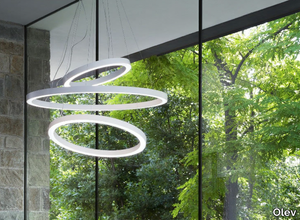
Olev > Ceiling lamp
Here’s the rephrased and expanded product description, including the supplier details and mention of the 3D file: *"This sleek suspension ring lamp features modern LED technology, delivering a focused downward light beam ideal for ambient or task lighting in residential or commercial spaces—its 3D file is also available for download. Crafted by Olev, a trusted interior design supplier specializing in versatile lighting solutions for diverse styles and budgets, the brand offers an extensive portfolio, from pendant lights to LED innovations, showcased at www.olevlight.com."*
SWORD - LED ceiling lamp _ Olev
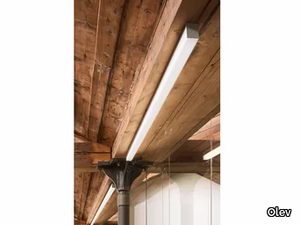
Olev > Ceiling lamp
Here’s a rephrased and expanded product description, including a concise supplier overview and mention of the 3D file: *"This versatile LED lamp can be suspended, wall-mounted, or ceiling-mounted, featuring a sleek opaline polycarbonate diffuser for soft, even illumination. The 3D file of the product is available for download, making it easier to visualize and integrate into your design plans. For additional details, refer to the manufacturer’s product page: SWORD | Ceiling lamp Olev. The lamp is supplied by Olev, a renowned interior design brand specializing in innovative and stylish lighting solutions for residential and commercial spaces."* (Note: I condensed the supplier description to one sentence while retaining key details about their expertise.)
TURN - LED wall light _ Olev
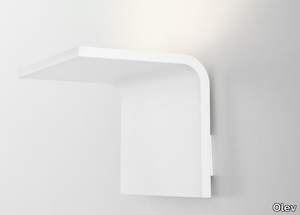
Olev > Wall lamp
**Turn** is a sleek LED wall lamp designed to provide elegant upward indirect lighting, creating a warm and ambient atmosphere in any space. A 3D file of the product is available for download, allowing for easy visualization and integration into design plans. **Supplier:** Olev is a trusted interior design supplier specializing in versatile lighting solutions, offering a wide range of stylish and functional products for both residential and commercial spaces. Explore their collection at [www.olevlight.com](http://www.olevlight.com).
ZEN - LED wall light _ Olev
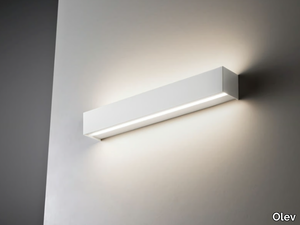
Olev > Wall lamp
Here’s a refined and expanded product description, including a concise supplier overview and mention of the 3D file: *"Zen is a sleek LED applique featuring dual-directional light beams that project both upward and downward, creating a harmonious balance of illumination. For further details, refer to the manufacturer's specifications under 'ZEN' on Olev’s product line. A downloadable 3D file of the product is available for design integration. Olev, a specialized interior design supplier (www.olevlight.com), offers versatile lighting solutions for residential and commercial spaces, blending innovation with aesthetic flexibility."*
CARV'N - Rectangular teak bedside table _ KARPENTER
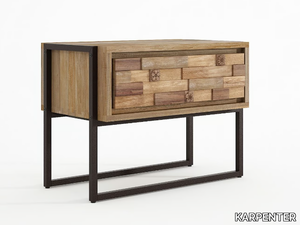
KARPENTER > Side table
Here’s your rephrased and expanded product description, including a concise supplier overview and mention of the 3D file: *The Carv'n Stand Night blends solid wood, wrought iron, and intricate carvings inspired by Hanakotoba (the Japanese language of flowers), creating a piece that exudes timeless elegance and modern sophistication. Designed as a fusion of contemporary aesthetics and vintage charm, it is meticulously crafted from FSC 100% reclaimed teakwood and finished with a rich Patina oil-based coating for durability and warmth. A 3D file of the product is available for download, allowing for seamless integration into virtual design plans. Supplied by KARPENTER, a renowned Indonesian-based brand celebrated for its sustainable, high-end furniture and commitment to eco-conscious craftsmanship since 2014.*
OVO STRIPED TRANSPARENT - Crystal door knob _ Glass Design

Glass Design > Finishes accessories
**OVO Striped Transparent – Crystal Door Handle** This elegant door handle features a sleek, striped design crafted from high-quality transparent crystal, adding a modern and sophisticated touch to any interior space. The minimalist yet striking aesthetic makes it a versatile choice for contemporary homes, offices, or hospitality settings. A downloadable 3D file is available for designers and architects to integrate this piece seamlessly into their projects. **Supplier:** Glass Design, a renowned Italian supplier since 1984, specializes in premium glass products for luxury interiors, offering innovative and customizable solutions. Explore their collection at [www.glassdesign.it](http://www.glassdesign.it).
MONNALISA CLASS FILIGRANA BLACK/SILVER - Vanity unit with mirror _ Glass Design

Glass Design > Washbasin cabinet
Here’s a refined and expanded product description, including a concise supplier overview and mention of the 3D file availability: *The **MONNALISA CLASS FILIGRANA BLACK/SILVER** is an elegant floor-standing vanity unit crafted from wood, featuring an integrated mirror for a seamless and functional design. With dimensions of L 67 cm x D 49 cm x H 200.5 cm, it combines sophistication with practicality, making it a striking addition to modern interiors. A downloadable 3D file of the product is available for detailed visualization and planning. Manufactured by **Glass Design**, a renowned Italian supplier since 1984 specializing in premium glass and interior design solutions, this piece reflects their commitment to innovation and luxury.*
LOGOS - Bedside table with drawers _ PIANCA
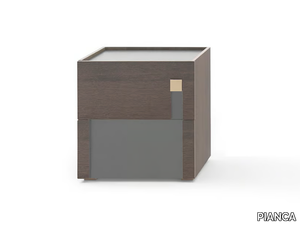
PIANCA > Side table
**Product Description:** Logos is a stunning collection of casegoods that blends geometry and elegance, inspired by Bruno Munari’s exploration of color juxtaposition. Each module features offset, overlaid elements on the front, creating a dynamic interplay of contrasting colors and volumes for a vibrant, customizable look. The innovative geometric design not only enhances aesthetics but also integrates functional details, such as seamless drawer openings. A 3D file of the product is available for download, allowing for detailed visualization. **Supplier Description:** PIANCA, a renowned Italian furniture brand since 1948, is celebrated for its contemporary designs and exceptional craftsmanship, offering premium pieces for modern living. Further details can be found on their website, [www.pianca.com](http://www.pianca.com).
GAMMA - Upholstered fabric chair with wooden legs _ PIANCA
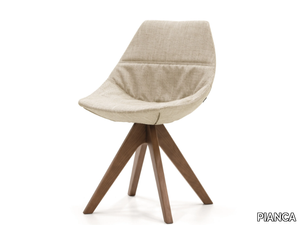
PIANCA > Chair
Here’s the rephrased and expanded product description, including a concise supplier overview and mention of the 3D file: **Gamma** is an elegant chair featuring wooden legs, available with a lacquered or upholstered seat and either a fixed or removable cover. The upholstery options include fabric, leather, or synthetic leather, with a variety of colors and textures from Pianca’s collection, while the legs come in different wood types and lacquered finishes. Its distinctive design combines clean, broken lines with vibrant hues, highlighting the contrast between the lightweight yet sturdy bases. The standout feature is its ergonomic seat, shaped like an egg’s cross-section for a comfortable, cocooning feel—whether in the rigid lacquered version or the padded option with fixed or detachable covers. The base offers five versatile configurations: classic legs, a metal pylon, swivel base, solid slanted wooden legs, or a tubular base. A 3D file of the product is available for download, allowing for seamless integration into design plans. **Supplier Overview:** Pianca is a renowned Italian furniture brand celebrated for its contemporary designs and craftsmanship since 1948. For more details, visit the manufacturer’s page on **GAMMA PIANCA**.
ABACO - Round coffee table with tray _ PIANCA
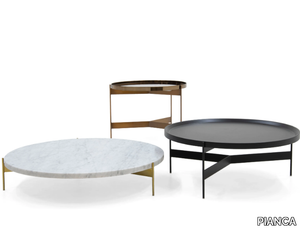
PIANCA > Coffee table
Here’s a refined and expanded product description, along with a concise supplier overview and mention of the 3D file availability: *The Abaco table’s minimalist design hides thoughtful geometric and structural details, playing with circles and symmetry for a harmonious aesthetic. Its lightweight base features three slender metal legs joined by a spoked frame, which supports the removable top—easily lifted to serve as a practical tray. Available in a mix of finishes, the table allows for playful or sophisticated styling, while its modular design encourages creative arrangements when paired with other pieces from the Abaco series. A downloadable 3D file of the product is available for visualization and planning. Crafted by PIANCA, a renowned Italian furniture brand celebrated for its contemporary designs and craftsmanship since 1948.*
QUADRA - Wooden highboard _ PIANCA
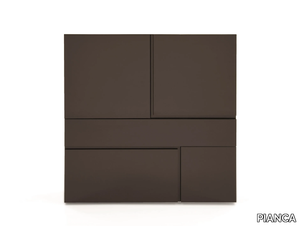
PIANCA > Cabinet
**Product Description:** The Quadra sideboard embodies minimalist elegance with its clean lines, sharply squared corners, and exceptional functionality. Its standout feature is the meticulously crafted finger grips on the solid wood doors, adding both practicality and refined detail. Available in versatile configurations—including hinged doors, flap doors, or drawers—it can be placed on a base, mounted on the wall, or set directly on the floor (though wall fixing is recommended for stability). The structure and fronts come in a variety of finishes, from matte to high-gloss lacquers in multiple colors, as well as premium wood options like Burgundy, Canaletto, Smoked Oak, Gray Oak, Lagoon Oak, Natural Oak, and Tobacco Oak. For added convenience, a 3D file of the product is available for download, allowing for seamless integration into design plans. **Supplier Description:** PIANCA, a renowned Italian furniture brand since 1948, is celebrated for its contemporary designs, exceptional craftsmanship, and versatile high-quality furnishings.
UNICA - Countertop square ceramic washbasin _ Alice Ceramica

Alice Ceramica > Washbasin
**Product Description:** The **UNICA** is a sleek, square ceramic washbasin available in two sizes, featuring delicate shapes, soft curves, and a sinuous design that exudes elegance. Part of **Alice Ceramica’s** timeless collection, this minimalist washbasin blends seamlessly into any style or setting, offering versatility for both modern and classic interiors. A 3D file of the product is available for download, allowing for easy integration into design plans. *Note: Pop-up plugs are not included and must be purchased separately (see product PIL06).* **Supplier Description:** **Alice Ceramica** is a renowned Italian supplier with over 20 years of expertise in high-quality ceramic and porcelain products, known for innovative designs and durability.
CARDAN 90.2 - Recessed LED multiple spotlight _ ONOK Lighting
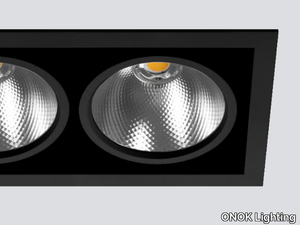
ONOK Lighting > Ceiling lamp
Here’s the rephrased and expanded product description, including a concise supplier overview and mention of the 3D file availability: **Product Description:** The **CARDAN 90.2** is a sleek, high-performance LED multiple recessed spotlight, available in two powerful variants: an 11W model delivering ≈1800lm and a 17W version offering ≈2500lm, both featuring a non-dimmable 3000K warm white glow and a 50º beam angle for precise illumination. Designed with a transparent diffuser and a choice of matte black or white + black finishes, it blends seamlessly into modern interiors while providing energy-efficient, high-quality lighting. A downloadable 3D file of the product is available for detailed planning and integration into your projects. For additional technical specifications, refer to the manufacturer’s details on **CARDAN 90.2** by ONOK Lighting. **Supplier Overview:** ONOK Lighting, a trusted Spanish lighting specialist since 1993, combines innovative design with premium materials to deliver versatile solutions for residential and commercial spaces worldwide. (Note: The supplier description has been condensed to one sentence as requested, while the product description is expanded with flow and clarity, including the 3D file mention.)
PALAZZO BROCCATO - Fire retardant jacquard fabric with graphic pattern _ L'Opificio

L'Opificio > Curtain
Here’s the rephrased and expanded product description, including a concise supplier overview and mention of the 3D file: **Product Description:** This fire-retardant jacquard fabric, ideal for curtains and light-use upholstery, combines timeless elegance with a retro-inspired 50’s aesthetic, featuring soft lines and a sophisticated texture. Made entirely in Italy, it is free from formaldehyde and crafted from a durable blend of 59% MA (modified acrylic) and 41% PL (polyester), with a weight of 400/420 g and a width of 140 cm. The design includes a subtle vertical repeat of 12 cm, perfect for adding refined detail to interiors. A downloadable 3D file of the fabric is available for visualization and design planning. Priced per linear meter. **Supplier Overview:** L'Opificio, a renowned Italian interior design supplier since 1998, specializes in high-end fabrics and furnishings, celebrated for their craftsmanship and timeless appeal. Let me know if you'd like any further refinements!
CAMBERWELL - Low marble coffee table _ Gianfranco Ferré Home
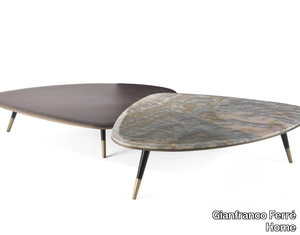
Gianfranco Ferré Home > Coffee table
Here’s your refined product description with an expanded yet concise supplier overview and a mention of the 3D file availability: *Inspired by the 1950s, the Camberwell tables feature distinctive oblique legs, bronzed caps, and profiles, paired with a curved top in an irregular shape for a dynamic aesthetic. Available in varying heights and premium materials—such as Smokey Grey-dyed Tay wood veneer, marble, or onyx—these tables enable bespoke compositions. The design includes an MDF profile with a brushed bronze lacquered finish, conical solid beech legs in black lacquer, and bronzed tips for a refined contrast. A downloadable 3D file of the product is available for design planning. Crafted by Gianfranco Ferré Home, a luxury Italian design brand renowned for its sophisticated, high-end furniture and timeless elegance, the Camberwell collection embodies modern luxury. For details, visit the manufacturer’s page on CAMBERWELL by Gianfranco Ferré Home.* (Note: Adjust the 3D file link/availability specifics if needed.)
112 - Floor lamp with dimmer _ Jean Perzel

Jean Perzel > Floor lamp
Here’s your refined product description with an expanded yet concise supplier overview and the addition of the 3D file availability: **Product Description:** The **112 Floor Lamp** by Jean Perzel is a sleek, direct-light floor lamp featuring a dimmer for adjustable ambiance. Its fluid lines and minimalist design offer versatile styling options, with multiple bowl choices—fluted or frosted glass for diffused atmospheric lighting, or a bronze bowl for indirect illumination. Ideal for both whole-room lighting and accentuating spaces, this lamp adapts to any decor and works with all bulb types. Various finishes are available to suit different tastes. A downloadable 3D file of the product is also provided for detailed visualization. For more details, visit the manufacturer’s page: [112 Floor Lamp | Jean Perzel](https://www.perzel.com). **Supplier Overview:** Jean Perzel, a legendary French lighting brand founded in 1923, is celebrated for its timeless, high-end fixtures that blend artisanal craftsmanship with contemporary elegance.
107 - Floor lamp with dimmer _ Jean Perzel

Jean Perzel > Floor lamp
**107 Floor Lamp by Jean Perzel** – This stunning floor lamp features a fluted glass bowl elegantly supported by three slender shafts, creating a striking visual effect that enhances both classical and modern interiors. For a warmer ambiance, it is also available with a bronze bowl option for indirect lighting. The lamp is versatile, compatible with any bulb type, and offered in a variety of finishes to suit different décor styles. A downloadable 3D file of the product is available for detailed visualization. *Jean Perzel, a prestigious French lighting brand since 1923, is celebrated for its timeless designs and exceptional craftsmanship in luxury illumination.* For more details, visit the manufacturer’s page: [107 | Floor Lamp Jean Perzel](http://www.perzel.com).
348 - Wall light _ Jean Perzel
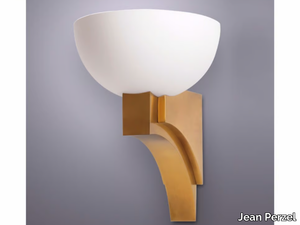
Jean Perzel > Wall lamp
**Product Description:** The **348 wall light** by Jean Perzel offers semi-direct lighting, featuring a frosted glass bowl elegantly balanced on a sculpted bronze wave base; it also comes in a full bronze finish for indirect illumination. Available in various finishes, this versatile fixture is compatible with any bulb type and includes a downloadable 3D file for design planning. **Supplier Description:** Founded in 1923 by French designer Jean Perzel, the brand is a leader in luxury lighting, celebrated for its timeless craftsmanship and innovative designs. Explore their collections at [www.perzel.com](http://www.perzel.com).
514 - Table lamp _ Jean Perzel
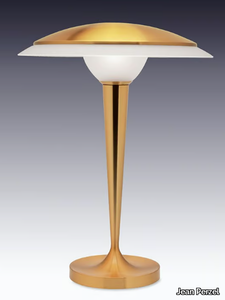
Jean Perzel > Table lamp
Here’s your rephrased and expanded product description, including a concise supplier overview and mention of the 3D file: *"The 514 table lamp, a timeless masterpiece by Jean Perzel, embodies elegance with its slender silhouette, exquisite materials, and meticulous craftsmanship—qualities that once captivated the decorators of the iconic cruise liner ‘Normandie.’ Available in multiple finishes and compatible with any bulb type, this lamp seamlessly blends functionality with artistry. A downloadable 3D file is available for precise visualization. Jean Perzel, a Paris-based luxury lighting pioneer since 1923, is celebrated for its fusion of traditional craftsmanship and modern design."* Let me know if you'd like any further refinements!
6215 - Glass bollard light _ Jean Perzel
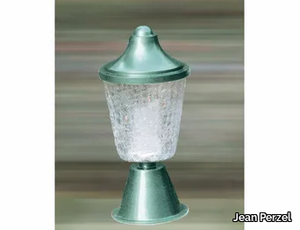
Jean Perzel > Outdoor lighting
**6215 – Watertight Wall Lights, Boundary Lights, and Floor Lamps in Blown Crackle Glass** These elegant fixtures feature exquisite blown crackle glass, adding a refined and sophisticated touch to outdoor spaces. Available in multiple finishes, they are designed to complement any exterior setting while providing durable, watertight illumination. Compatible with various bulb types, they offer both style and functionality. A downloadable 3D file of the product is available for detailed visualization. **Supplier Overview:** Jean Perzel, a prestigious French lighting brand founded in 1923, is celebrated for its timeless craftsmanship and luxurious designs, blending traditional techniques with modern innovation. Explore their collections at [www.perzel.com](http://www.perzel.com).
GALILEO LOUNGE - LED painted metal wall lamp _ Modo Luce
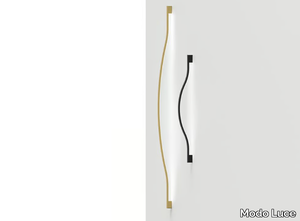
Modo Luce > Wall lamp
Here’s your rephrased and expanded product description, including a concise supplier overview and mention of the 3D file: *"Galileo Lounge embodies a harmony of contemporary design, featuring sinuous, elegant light strips that create a discreet yet striking volume, casting diffuse and homogeneous illumination. Available as a pendant or wall lamp, its metal structure comes in white, lead grey, or matte gold finishes. The pendant version includes a 40W LED module (5000 lm, 3000K), while the wall lamp offers two sizes: 75cm (10W, 1230 lm, 3000K) or 145cm (20W, 2500 lm, 3000K). A downloadable 3D file of the product is available for further customization. Crafted by Modo Luce—an Italian design leader renowned for innovative, stylish lighting solutions—this piece reflects their commitment to blending functionality with modern aesthetics. For more details, visit [Modo Luce’s website](https://www.modoluce.com/it/)."* Let me know if you'd like any further refinements!
VICTORIA - Square low fiberglass coffee table _ GANSK
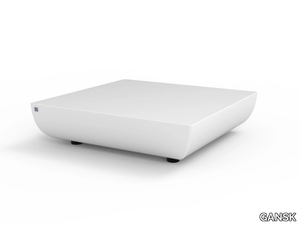
GANSK > Side table
Here’s the rephrased and expanded product description, including a concise supplier overview and mention of the 3D file: *The VICTORIA is a sleek, square fiberglass garden side table featuring a matte white lacquer finish (ref. 9227), supported by durable iron feet with an electroplated and thermo-lacquered treatment in anthracite gray. Designed for both style and resilience, it’s also available in a rectangular version and comes in two sizes to suit different outdoor or indoor settings. A downloadable 3D file of the product is available for visualization and planning purposes. For more details, refer to the manufacturer’s specifications under VICTORIA GANSK. GANSK is a Portugal-based interior design supplier known for its high-quality, contemporary furniture and decor, catering to residential and commercial spaces.*
FOX - Leather and fiberglass armchair _ GANSK
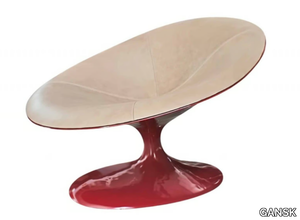
GANSK > Armchair
Here’s the rephrased and expanded product description, along with a concise supplier overview and mention of the 3D file: **"The FOX armchair features a sleek, upholstered leather design paired with a durable fiberglass-reinforced resin base, finished in a high-gloss Marsala lacquer for a bold, sophisticated look. A 3D file of the product is available for download, allowing for seamless integration into virtual design plans. Crafted by GANSK, a renowned Portuguese interior design supplier known for its high-quality, contemporary furniture and accessories, the FOX armchair embodies both elegance and functionality."** (Note: The supplier description has been condensed to one sentence while retaining key details about GANSK’s reputation and focus.)
MUSEU - LED fiberglass and stainless steel bedside lamp _ GANSK
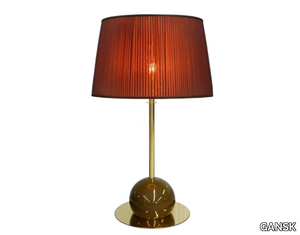
GANSK > Table lamp
Here’s your refined product description with an expanded yet concise supplier overview and mention of the 3D file: *The MUSEU table lamp combines elegance and functionality, featuring a high-gloss brown lacquered base made from fiberglass-reinforced resin, a brass-plated stainless steel structure, and a pleated fabric lampshade. It includes a 14W vintage-style LED bulb for warm, ambient lighting. A downloadable 3D file of the lamp is available for design visualization. For further details, refer to the manufacturer, GANSK—a Portugal-based interior design brand known for its high-quality, contemporary lighting and furniture.* (Kept the supplier description brief while highlighting their key strengths.)
E-221 - Nylon® fabric _ NATURTEX
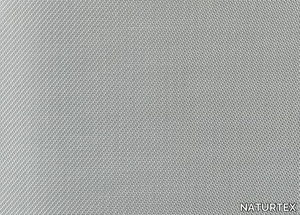
NATURTEX > Wallcovering
Here’s the rephrased and expanded product description, including a concise supplier overview and mention of the 3D file availability: *"This metallic-effect nylon mesh fabric combines industrial aesthetics with contemporary design, making it an ideal choice for separators, screens, rolling blinds, panels, lighting, and partitions in both residential and contract spaces. With a width of 140 cm, a weight of 200 g/m², and a thickness of 0.5 mm, the unbacked 100% nylon material offers durability and a sleek, modern look. A 3D file of the product is available for download to assist with design planning. Note: This item is made to order with a minimum purchase of 25 meters. For further details, refer to product code E-221 NATURTEX. NATURTEX, a Barcelona-based supplier since 1980, specializes in sustainable, nature-inspired interior textiles, including wallcoverings, upholstery fabrics, and rugs, blending traditional craftsmanship with innovative design."* Let me know if you'd like any further refinements!
A-1255 - Polyurethane upholstery fabric _ NATURTEX
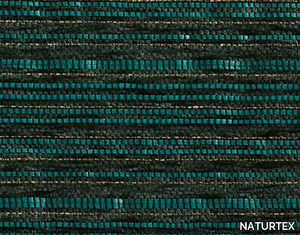
NATURTEX > Wallcovering
Here’s the rephrased and expanded product description, including a concise supplier overview and mention of the 3D file availability: --- This versatile braided fabric combines polyurethane and chenille, featuring a sophisticated metal lines stripe effect on a chromatic color base, making it ideal for upholstery, wall coverings, panels, lighting, and rugs. Its adaptable structure ensures compatibility with any surface or object, maintaining the flexibility characteristic of the STRIPES line. Available in colors 20, 22, 33, 34, and 35, the fabric has a width of 150 cm, a weight of 425 g/m², and a thickness of 1.9 mm, with a foam backing for added durability. Composition: 44% polyurethane, 33% acrylic, and 23% polyester. Designed by **NATURTEX**—a Barcelona-based leader in sustainable interior textiles since 1980—this product reflects their commitment to innovative, eco-conscious design. A 3D file of the product is available for download to assist with visualization and planning. *Note: No stock available; minimum order of 25 meters required. For more details, refer to product code A-1255 NATURTEX.* --- This version keeps the description engaging while succinctly highlighting the supplier’s credibility and the 3D file feature. Let me know if you'd like any further refinements!
PERILLO TAVOLA - Round table in MDF and chromed steel base _ ZÜCO
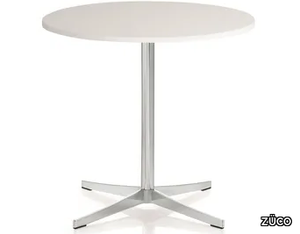
ZÜCO > Table
Here’s the rephrased and expanded product description, including a concise supplier overview and mention of the 3D file: **Perillo Tavola** is a sleek and versatile round bistro table, featuring an 80 cm diameter and 73 cm height, with a durable 19 mm painted MDF top and a sturdy chromed or powder-coated steel base (4 spokes, 75 cm diameter). Designed as the ideal companion for *Little Perillo* and *Little Perillo XS* chairs, its clean, modern lines also pair effortlessly with other seating ranges. Built for stability—essential for bustling bars, cafés, and restaurants—its robust sub-frame comes in white or polished aluminum, combining strength with timeless style. Available in three heights, two shapes, and three table-top sizes, plus a hard-wearing DD lacquered finish, it’s tailored for heavy daily use. A downloadable 3D file is available for precise planning. *Supplied by ZÜCO, a trusted Swiss-based interior design brand known for high-quality, stylish furniture and accessories for residential and commercial spaces.* For further details, refer to the manufacturer’s specifications on **PERILLO TAVOLA ZÜCO**.
Products From the Same Collection
A wide range of product from furniture to finishes to meet the desire of all designers.
GRIP - Chest of drawers _ Zalf
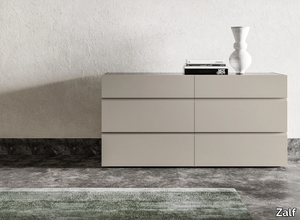
Zalf > drawer
Here’s the rephrased and expanded product description, including the supplier details and mention of the 3D file: *"Grip is a sleek and functional furniture collection for the sleeping area, co-designed with Roberto Gobbo, featuring bedside tables and drawers in various sizes and finishes to suit modern interiors. The 3D file of the product is available for download, allowing for seamless integration into design plans. Manufactured by Zalf, a renowned Italian design brand since 1974, the collection reflects their commitment to high-quality, contemporary furniture solutions. For more details, visit GRIP | Chest of drawers Zalf."* This keeps the supplier description concise while adding value to the product description.
GRIP - Bedside table with drawers _ Zalf

Zalf > Side table
Here’s the rephrased and expanded product description, including the supplier details and mention of the 3D file: *"Grip is a sleek and functional furniture collection designed for the sleeping area, created in collaboration with Roberto Gobbo. The series features versatile bedside tables and drawers, available in multiple sizes and finishes to suit various interior styles. For further details, visit the manufacturer’s product page: [GRIP | Bedside table Zalf](https://www.zalf.com). A downloadable 3D file of the product is also available for design planning. Zalf, the Italian supplier behind this collection, has been a leader in high-quality contemporary furniture since 1974, offering innovative solutions for modern living spaces."* This keeps the supplier description concise while adding value to the product details. Let me know if you'd like any refinements!
Recommended Products
A wide range of product from furniture to finishes to meet the desire of all designers.
Relate Side Table
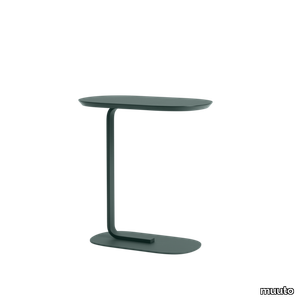
muuto > Side table
An elegant side table with two planes, connected through a graphic leg for a modern expression. Pull the Relate Side Table up to a sofa to use as a hot desk or place it in any space to hold various objects.
Hiray side table
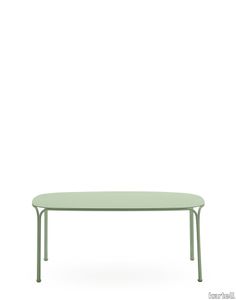
kartell > Side table
HIRAY takes metal, one of the most important materials for the greening of the Kartell catalogue, and uses the welded wire process to shape it. The result is an essential and functional product that is nevertheless rich in emotion. Metal wires form well-defined yet lightweight structural parts of the collection’s chair, chair with arms, bistro table, armchair, divan and side table. The various articles come in white, Bordeaux, black and green.
Blast square
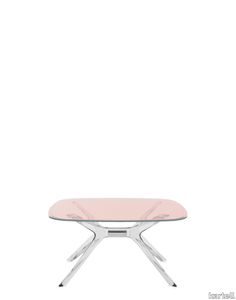
kartell > Side table
Blast is a side-table (available in square or rectangular versions with rounded corners) with transparent base and tops. The design is a development of the Sir Gio table, with the opportunity to associate and combine different coloured bases and tops. The central core of the base is available in chrome or copper metallic finishes.
Jolly
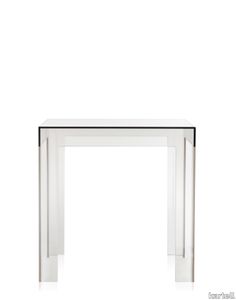
kartell > Side table
A completely transparent small side table in the perfect size: 40x40x40 cm. Colourful, practical, safe and functional, Jolly is a versatile and fun side table.
Rotate SC73
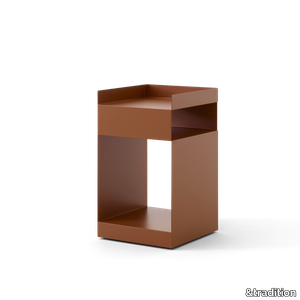
&tradition > Side table
Rotate’s unassuming appearance belies its highly functional design. Created to fulfil a wide variety of purposes – from an office trolley, to a bedside table or bathroom storage unit – this asymmetrical piece can be inserted into any space. To ensure maximum adaptability, it sits on discreet wheels to facilitate quick and simple manoeuvrability from one location to the next.
In Between SK13
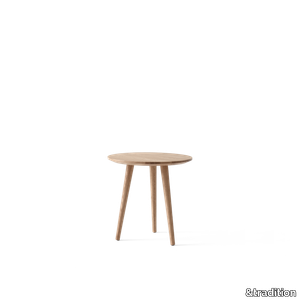
&tradition > Side table
Sitting within the larger In Between series, this lounge table carefully echoes many aspects of the In Between chair, from its gentle curvature to the outward splay of its legs. It is available in two heights and comes in three finishes: black lacquered oak; oiled oak; and smoked oiled oak.
BK16 Side Table
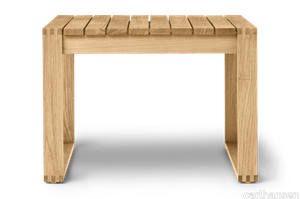
carlhansen > Side table
The BK16 side table was designed in 1959 by Danish architect and professor Bodil Kjær. Part of a collection of beautifully crafted indoor-outdoor furniture in solid teak, its Cubist-inspired form echoes other designs in the series, all of which have a clean-lined and geometric quality. Perfectly proportioned to match the height of the collection’s lounge chair, the BK16 side table displays the same superior craftsmanship and striking simplicity that underpins the entire Indoor-Outdoor Series.
Tucano
.png)
zanotta > Side table
Writing desk. Matt black varnished steel frame. Top covered with cowhide pigmentato 90.
Quaderna 2600
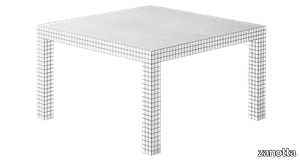
zanotta > Side table
Table. Honeycomb core structure coated with white plastic laminate, digitally printed with black squares at 3 cm spacing.
Elica
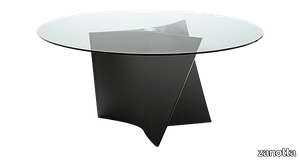
zanotta > Side table
Tables. Base in Cristalplant®, composite material based on polyester and acrylic resins, loaded with minerals and mass pigmented. For the version 2575, tempered, extraclear, acidated plate glass top painted in the shade of white or made of white Carrara marble only matching the matt white base; or Sahara Noir marble top, with stain-resistant clear matt polyester protective varnish, matching the matt black varnished base. For the version 2576, clear plate glass top, matching the matt white base or black glossy lacquered; or smoky grey plate glass top only matching the black glossy lacquered base.
Oscar
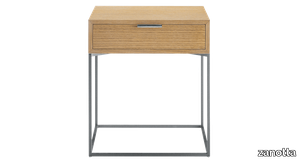
zanotta > Side table
Bedside table with drawer. Graphite painted steel frame. Handle in graphite painted aluminium. Drawer in medium density fiberboard veneered with natural oak or varnished grey or white.
Niobe 648
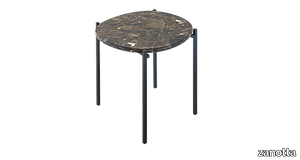
zanotta > Side table
Small table. Steel frame painted in the shades black or white. Tops available either in white Carrara marble, in black Marquinia marble or in Emperador marble, with stain-resistant protective varnish, in clear matt polyester.
UPHOLSTERY
A wide range of Upholstery and materials provided by our suppliers to satisfy your needs.
AI services
Fringe Chatbot | Image Finder | Fringe Dall-e | Area Analyzer


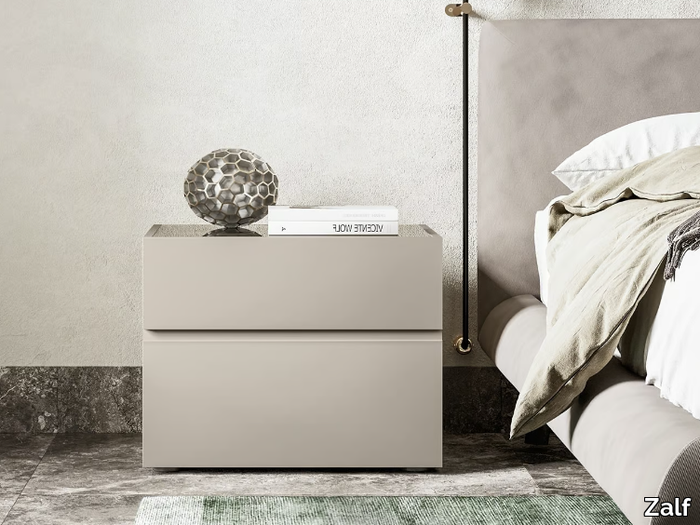
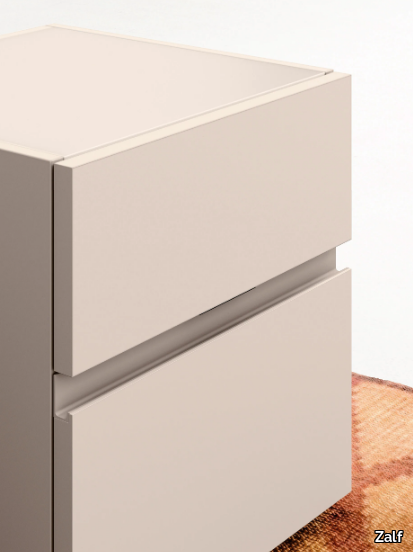


.png)
